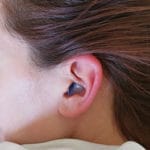We all tend to have a favourite sleeping position. Some 60% of the adult population are side sleepers, making it a popular choice, however there are other ‘sleep styles’, all of which can impact differently on your body and physical wellbeing.
Good posture applies to your sleeping position and if you’re experiencing pain or discomfort when you wake up in the morning, it may be down to which one you adopt. Although it’s not easy to break a habit, trying out different sleeping positions might have positive implications on your health and quality of sleep (and your partner’s too if you’re a snorer!). We have looked at the different positions and some of the pros and cons to them all. However, as we like to say at Snugs, we are unique individuals so one position will not suit all – just find out what works best for you.
The Side Sleeper
As mentioned above, the side sleeper is a common one, particularly as we get older as the flexibility of our spine decreases. It’s also ranked up there as one of the better ones for your body.
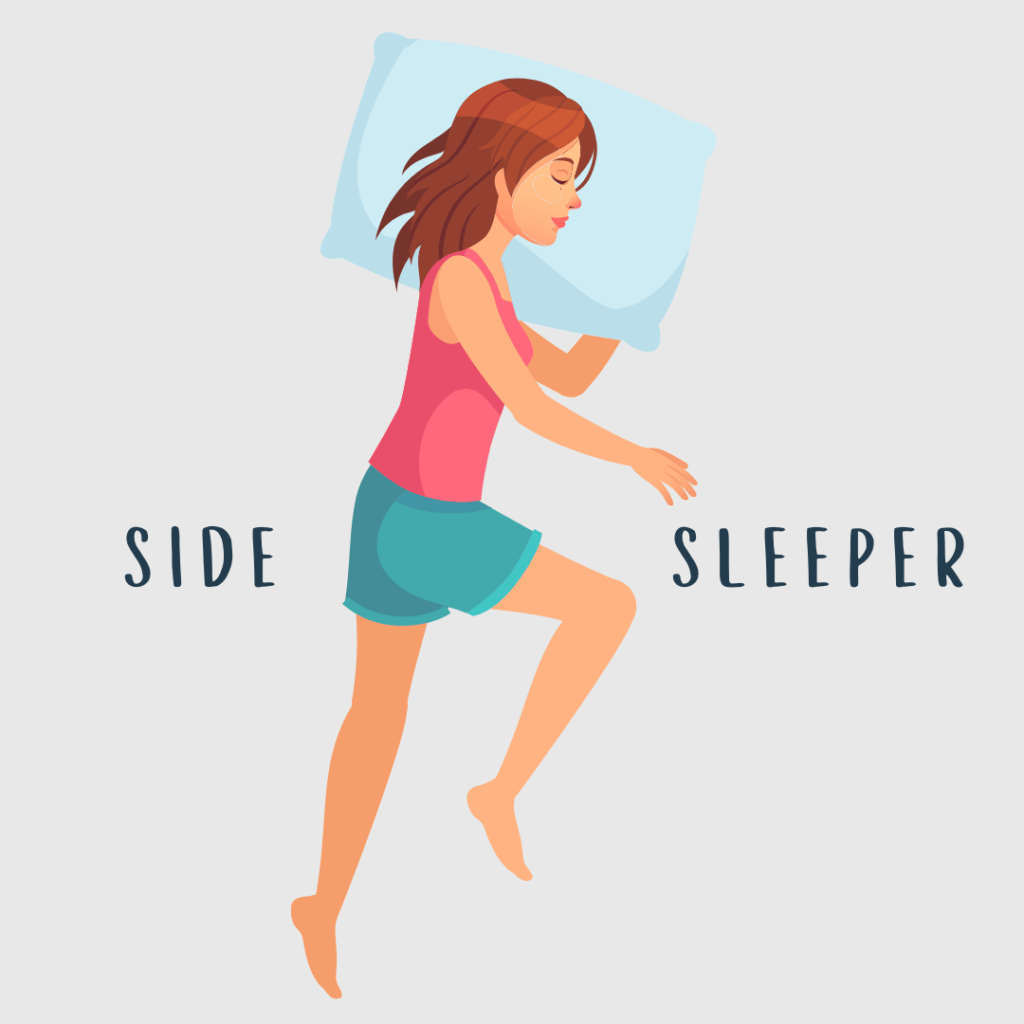
The Pros:
- Helps prevent mild sleep apnea – this is where your airways collapse during sleep, leading to pauses in breathing. Sleeping on your side can help mitigate this
- Less likely to snore (a symptom of apnea). Got to be a bonus if it means your partner is no longer kicking you in the night to try to get you to stop
- Good for the curvature of your spine
- Can help with your digestive system. People who experience heartburn, constipation, bloating, or other gastrointestinal issues may feel relief if they sleep on their side.4
SLEEP TIP – pop a pillow between your knees. The pillow will keep your hips, pelvis, and spine in better alignment.
The Cons:
- If you suffer from heartburn, sleeping on your right side can make symptoms worse That’s true for people who have gastroesophageal reflux disease (GERD) and for people who have heartburn for other reasons, such as pregnant women.1 Flip to your left side to cool the burn.
- If you’re worried about wrinkles, this position is not for you. Your face on the pillow can cause creases and your skin to break out too
- Can lead to soreness and tightness in your shoulders
Are you a side sleeper but also get affected by noise? You’ll most likely want to wear earplugs to help with that. Make sure you use SnugsZen earplugs. Moulded to your ear canals and made from a soft silicone, they ensure you can comfortably rest your head on a pillow whilst effectively reducing outside noise. Enjoy 15% off with code ZENPOSITION15 at checkout.
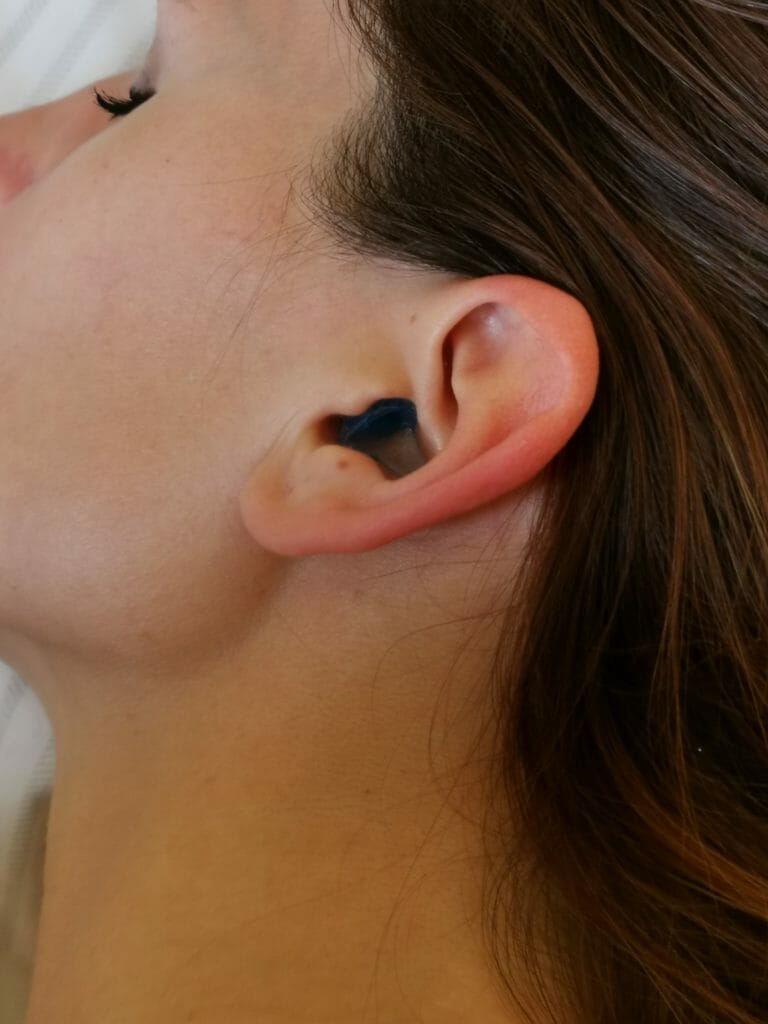
Fetal Position
How did you sleep last night? I slept like a baby…
This saying rings true if you like to sleep in the fetal position. This is a variation of the side sleeper really and is popular amongst women, who are twice as more likely as men to sleep curled up on their side3

The Pros:
- The fetal position is good at helping to prevent herniation. This is where the discs between your vertebrae are pushed out of their normal space, causing weakness, nerve pain and more. By curling into the fetal position, you open-up the space between your vertebrae.2
- This position’s also good for pregnant women. When expecting, lie on your left hand side to improve circulation to your growing baby and prevent your uterus from pressing against your liver.3
The Cons:
- Promotes an uneven distribution of weight that can cause back pain and sore joints
On your back
Says it on the tin. You can be a soldier, arms straight down by your side, or a starfish, with your body splayed out.
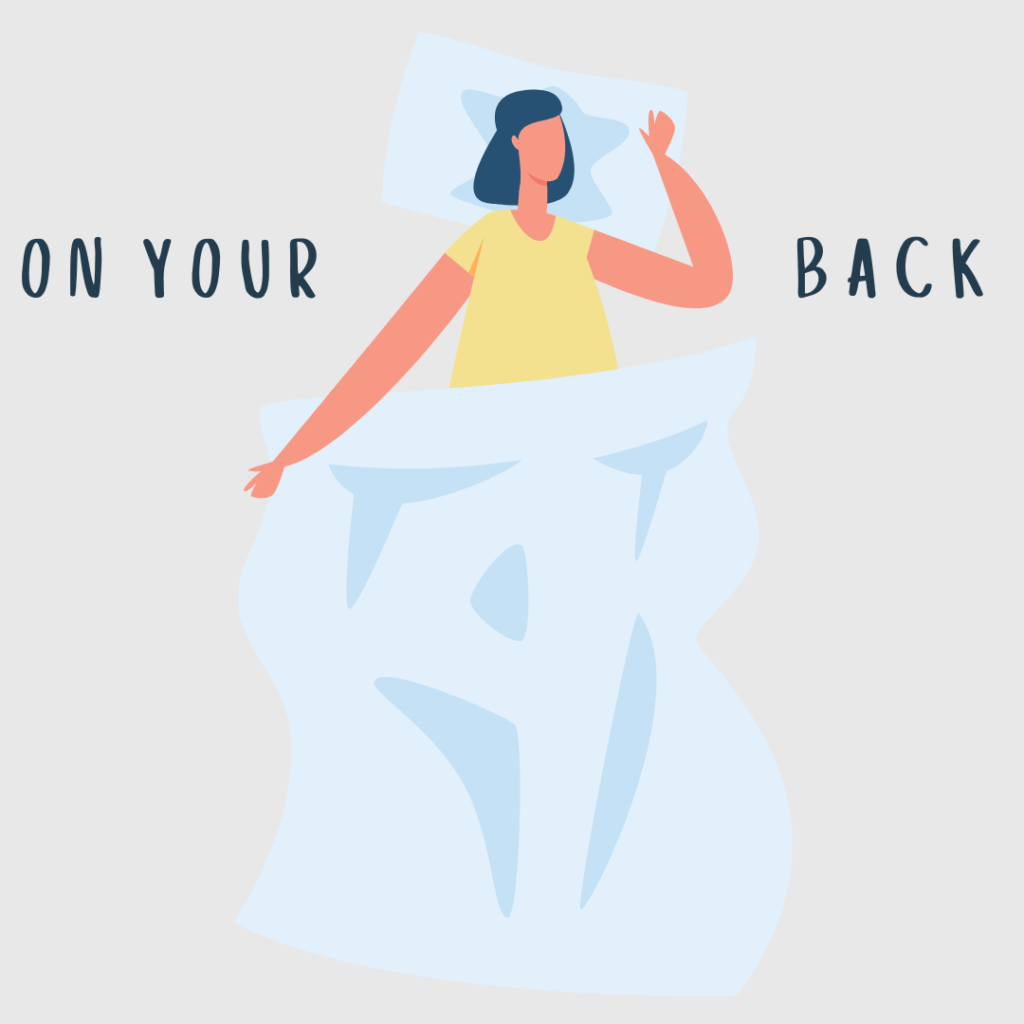
The Pros:
- Your body weight is evenly distributed across the widest area of your body, which means you put less strain on any pressure points. It can therefore help alleviate any lower back pain
- Allows for good alignment of your spine and internal organs
- Can help prevent acid reflux
- Good for those worried about wrinkles as your face is not pressed on to the pillow
SLEEP TIP – if you have allergies or a stuffy nose, prop a pillow under your upper back to keep it in a more upright position. This will help your airways to stay open and your nose to drain (nice image there isn’t it).
The Cons:
- Can make neck pain worse (so if you’ve got lower back pain and neck pain, it is probably best to try something else!)
- A cause of snoring, which is not only annoying, can be rather unattractive when lied on your back, mouth wide open snoring away. Snoring can cause your carotid artery to thicken, which supplies blood to your brain, face, and neck, so if changing your sleep position stops it happening, it’s best to give it a go
SLEEP TIP – if you’re partial to sleeping on your back, make sure you invest in a good, supportive mattress
Stomach sleeper
Like to sleep on your belly? Unfortunately, this position is not doing your back and spine much good and is generally advised to avoid. As it flattens the natural curve of your spine, it puts pressure on it which can lead to lower back and neck pain.
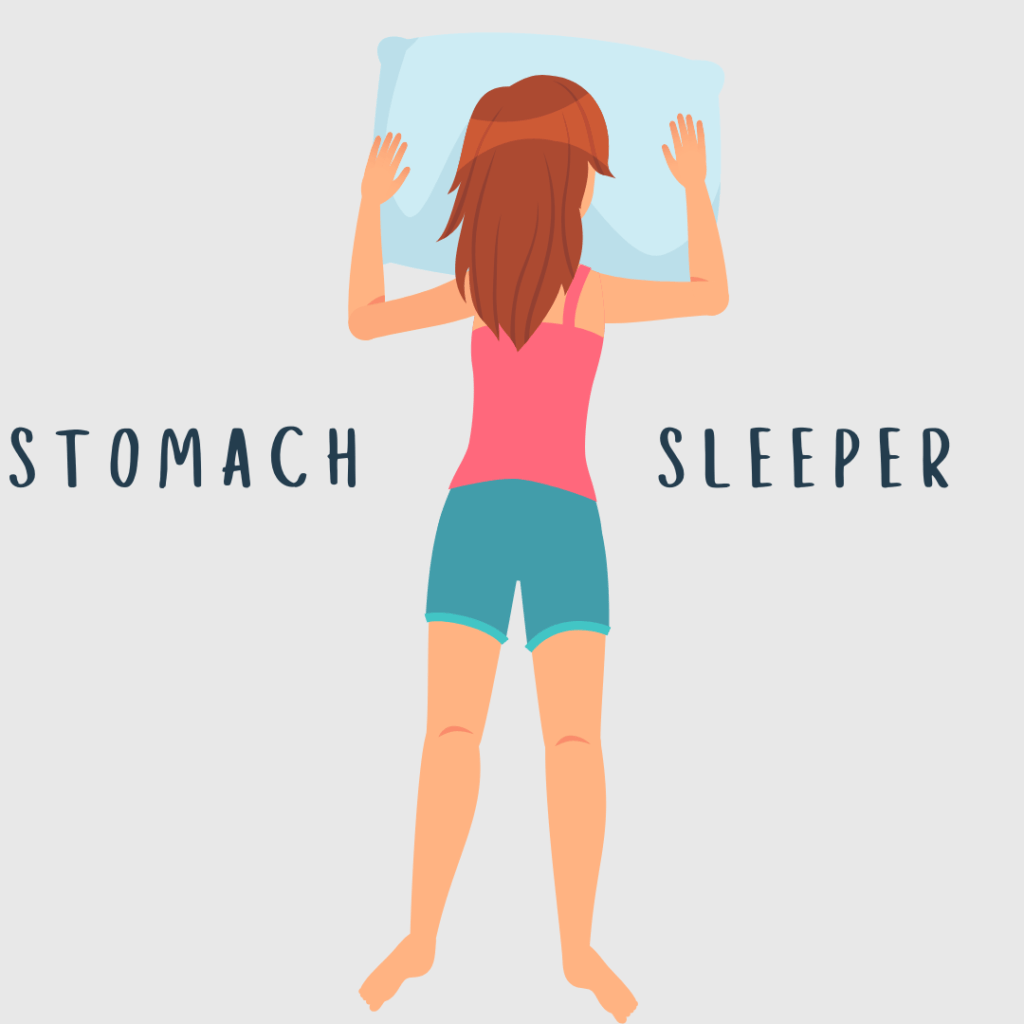
You’re also more likely to toss and turn to try to get comfortable when sleeping on your stomach, which is not conducive to a good night’s sleep.
SLEEP TIP – Place a flat pillow under the stomach and pelvis area to help keep your spine in better alignment. If you sleep on your stomach, a pillow for your head should be flat, or sleep without a pillow.
A few other tips to help get some quality sleep time
Finding the right sleep position for you is not the only factor to consider. Insuring you have a good sleep environment, as well as getting the best sleeping position for you, can help aid sweet dreams. Here are some ideas to try:
- Clean sheets: your bed is a source of dust and dander (best not to read too much into this as it can be worrying how must there is in your bedroom!). Just make sure you wash your sheets frequently and vacuum the mattress to remove it, this will help if you suffer with allergies and don’t want it aggravated during the night
- Have good curtains/blinds: Creating a dark room will help you switch off. Invest in a facemask such as the Manta mask to really keep light out. But make sure to open the curtains (or poke your head outside) in the morning to reset your internal clock.
- Location matters: Position your bed so you aren’t facing distractions such as a desk stacked with work or a blinking light. In fact, try to keep gadgets and tech out of the bedroom
- Wear earplugs: If noise keeps you up at night, use SnugsZen custom fit earplugs to make your bedroom quieter. This is a choice of many with snoring partners!
- Invest in your mattress: According to the National Sleep Foundation, you should replace your mattress every 6 to 8 years. Having the right one for you is important to your sleep posture and comfort. Emma Mattresses have a range of options as well as a handy ‘risk free’ trial period to make sure you are happy with your purchase.

So, now you know a little more on the topic of sleep, you can make some changes if required to help get the best night possible.
Happy sleeping!
References
1. Rachel Salas, M.D. – Johns Hopkins Medicine – https://www.hopkinsmedicine.org/profiles/details/rachel-salas
2. Healthline – (healthline.com)
3. WebMD – (webmd.com)
4. Sleep Foundation – https://www.sleepfoundation.org/sleeping-positions



